The College of Agricultural Sciences at Oregon State University is Oregon's principal source of knowledge relating to agricultural and food systems, and a major source of knowledge regarding environmental quality, natural resources, life sciences, and rural economies and communities worldwide. The College provides undergraduate and graduate education leading to baccalaureate and graduate degrees, and extended education programs throughout Oregon and beyond. Its research programs create knowledge to solve problems and to build a knowledge base for the future. It is a source of information and expertise in integrating and applying knowledge with benefits that are felt in domestic and international settings.
Volume VIII - Issue 2
Dan's Observations

Our budget might be complicated, but our mission is clear
You might be surprised to know that nearly half of the College’s budget comes from federal funds. Last year, the College received more than $58 million in external funding leveraged by state support. That phrase “leveraged by state support” is important to consider.
The idea of research and education in the service of the people began with the Morrill Act of 1862 that created the nation’s land-grant university system, during the height of the Civil War. The Hatch Act followed in 1887, creating a national network of Agricultural Experiment Stations, and in 1914, the Smith-Lever Act established the Cooperative Extension Service in every state.
Today, the state’s contributions to these Statewide Public Service Programs are funded by separate line items in the Oregon budget. Every state dollar invested in the OSU Statewides leverages nearly ten dollars in economic benefits to the state.
I’ve been spending lots of time in Salem this spring, sharing evidence with legislators on the return of investment in the Statewides. I’m grateful to the many stakeholders who have shared their stories about how agricultural research and Extension have made a positive difference to their families and livelihoods.
With contributions from federal, state and county governments, as well as commodity commissions, royalties, foundations, private companies, gifts and other sources, our budget might be complicated, but our mission is clear.
Every day, in every community across Oregon, people are engaged in learning and discovery through OSU’s statewide programs. From Master Gardeners to food innovation, sustainable agricultural, and environmental quality, our research and Extension faculty solve problems and create opportunities in communities across Oregon.
Thank you for your continued support for OSU’s Statewide Public Service Programs.
Sincerely,
Dan
Daniel J. Arp
Reub Long Professor and Dean
College of Agricultural Sciences
Director
Oregon Agricultural Experiment Station
Recent News
 Oregon's Agricultural Progress Magazine: The future of water
Oregon's Agricultural Progress Magazine: The future of water
The College of Agricultural Sciences might not be the first place you’d expect to find world-class research in water and climate, but here it is. In this issue of Oregon’s Agricultural Progress, we explore the work of scientists who are protecting water quality, reducing water waste, and helping us live sustainably on this watery planet. When you think about it, our future IS the future of water.
Let us know what you think.
Yours,
Peg Herring
Editor
Can you guess what the image on the cover is? You can explore the answer in this issue of OAP. OAP has many multimedia pieces that make your reading experience richer!
 Castagnoli named director at Mid-Columbia Agricultural Research and Extension Center
Castagnoli named director at Mid-Columbia Agricultural Research and Extension Center
We are pleased to announce that Steve Castagnoli has accepted the position as Director of the Mid-Columbia Agricultural Research and Extension Center (MCAREC) in Hood River, Oregon, beginning April 1. Steve is currently an Associate Professor in OSU’s Department of Horticulture. He joined the department in 1992, and has been an extension faculty member at MCAREC for almost 17 years. Steve brings a wealth of knowledge of tree fruit research, production and pest management to the Director position. Through his extension position in Hood River, he also has an exemplary record of outreach to growers in the Mid-Columbia region.
OSU Update
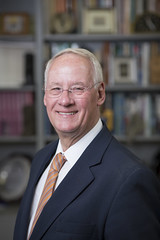
President Ray's State of the University Address
February 8th was a very memorable day for Oregon State University as more than 750 members of Beaver Nation came together at the Oregon Convention Center in Portland for my annual State of the University Address.
We celebrated many remarkable achievements of the university, our faculty, staff and our students.
In my address, I announced that the OSU Foundation has committed to raise $150 million to support Oregon State’s Student Success Initiative.
As you know, as part of the Student Success Initiative, we have committed that the entire university will work to achieve these goals by 2020:
- Improve retention and graduation rates for all students;
- Find ways to make an OSU degree an affordable reality for all qualified Oregonians;
- Make sure that Oregon State is the school of choice for Oregon’s high-achieving and highly accomplished students; and
- Ensure that Oregon State is a university where all students achieve success regardless of their economic status, the color of their skin or family background.
OSU president calls on Oregon Legislature to prioritize state funding for higher education
 Charlene Alexander named vice president and chief diversity officer at Oregon State
Charlene Alexander named vice president and chief diversity officer at Oregon State
(By Steve Lundeberg) Oregon State University President Edward J. Ray has named Charlene Alexander to serve as the chief diversity officer and a vice president for the university.
Alexander, associate provost for diversity at Ball State University in Muncie, Indiana, will start at OSU on June 30. She will succeed Angela Batista, who has served as OSU’s interim chief diversity officer and vice president since February 2016.
“I created this position to oversee institutional change and strategic initiatives to help advance Oregon State University as a community characterized in all we do by inclusive excellence,” Ray said. “I’m thrilled that Charlene will bring her talents and capabilities to Oregon State.”
Our Best
 Food Science & Technology prof honored for research on healthful properties of berries
Food Science & Technology prof honored for research on healthful properties of berries
(Life@OSU) OSU berry researcher Ron Wrolstad received a top honor from his fellow scientists at a worldwide berry-health conference last month.
Wrolstad, distinguished professor emeritus in the Food Science and Technology department, was honored with the Dr. Jim Joseph award at the Berry Health Benefits Symposium, held in Pismo Beach, Calif.
Wrolstad was recognized for his career-long research on anthocyanin chemistry and color stability in berries. Anthocyanins are plant chemicals that, thanks in part to Wrolstad’s work, are now known to promote human health.
His research has contributed to berry-processing technologies that preserve these anthocyanins. They include methods for identifying and quantifying anthocyanins in berries and preventing their loss during processing; recovering anthocyanins and other health-boosting chemicals from berry-processing byproducts; and isolating anthocyanins from berries for use as natural colorants.
 Vice Provost Awards of Excellence
Vice Provost Awards of Excellence
Acknowledging and congratulating our College of Agricultural Sciences faculty who were honored with Awards of Excellence at the celebration and luncheon held April 17.
Top 10 Projects- Sam Angima, Katie Gaebel, Mary Stewart and Jonathan Velez: Collaborative Community Engagement: Experiential Learning Through Extension
- Guillermo Giannico: Prioritization of Watershed Restoration Actions Involving riparian Landowners
Honorable Mention Projects
- John Williams, Amy Derby: 4-H Urban-Rural Exchange - Bridging Greater Understanding and Awareness of Urban-Rural Interdependence
- Nick Andrews, Patrick Hayes, James Myers, Lane Selman, Alex Stone: Culinary Breeding Network Variety Showcase
- John Bolte: Envision Tillamook Coastal Futures
- Luisa Santamaria: What Workers Think: Communication Needs Assessment for Latino Nursery Workers
 OSU Phi Beta Kappa award for best mentor/advisor: Nick Fleury
OSU Phi Beta Kappa award for best mentor/advisor: Nick Fleury
Nick Fleury, Head Advisor for the College of Agricultural Sciences, has been recognized with the OSU Phi Beta Kappa award for best mentor/advisor. He was nominated by a student member of Phi Beta Kappa at OSU, and then chosen to win this award by the student group at large through a popular vote. This award is made to an adviser devoted to assisting students in finding an educational path most suited to their unique talents and interests.
Founded in 1776, Phi Beta Kappa is the nation's oldest and most prestigious academic honor society. Only about 10 percent of the nation's institutions of higher learning have Phi Beta Kappa chapters, and fewer than 10 percent of the students in the liberal arts and sciences at these distinguished institutions are selected for membership in the Society.
 Professor John Selker named a 2017 Distinguished Professor
Professor John Selker named a 2017 Distinguished Professor
Professor John Selker, Department of Biological and Ecological Engineering, is internationally recognized for environmental instrumentation and soil physics, particularly for his work on preferential flow. His innovative contributions have impacted a great diversity of fields, including groundwater hydrology, soil physics, terrestrial ecology, aquatic science, environmental instrumentation, and environmental and agricultural management. He has also inspired and mentored many graduate students to reach their career goals.
The Distinguished Professor award has been presented annually since 1988 to outstanding active OSU faculty members who have achieved extraordinary national and/or international stature as a result of their contributions in research and creative work, education and service.
Global Experiences
 OSU Abroad Blog
OSU Abroad Blog
The OSU Abroad Blog’s purpose is to inform and educate the OSU community about education abroad opportunities and to highlight returnees/alumni’s stories. If you know any education abroad returnees who you’d like to highlight, please do not hesitate to forward their information to me.
Danita Dahl is an Animal Sciences major that went on an OSU faculty-led program in Antarctica. This is a two part series about her exciting journey in Antarctica.
 Helene Matschek (AG and French double major, former Ambassador) was awarded a Boren Scholarship for Fall 2017.
Helene Matschek (AG and French double major, former Ambassador) was awarded a Boren Scholarship for Fall 2017.
The Boren Scholarship is an award of $10,000, given to students who are pursuing international career interests related to national security, broadly defined.
Helene will participate in the American Foreign Languages Institute (AFLI) in Florida in Summer 2017 in preparation for Wolof language in Senegal. During Fall 2017, she will be on a study abroad program in Senegal, where she will be focusing on agricultural development and environmental sustainability.
As part of the Boren Scholarship, students are expected to give one year of service to the federal government after completion of their undergraduate career. Helene is considering the Foreign Service Officer track through USAID or the USDA Foreign Agricultural Service as future opportunities.
 Daria Van De Grift
Daria Van De Grift
My name is Daria Van De Grift and I am a senior majoring in Food Science and Technology. I have also been studying French for the past seven years, and have wanted to go to France. I finally was able to go this past fall for the semester. I was enrolled at ISARA-Lyon, which is an Agricultural Engineering College. I was living in Lyon, France with a host family for my time there. I loved my family, and they were definitely the best part of my experience. My education a ISARA was different than OSU. I would spend my day in the same classroom with rotating teachers for different subjects. It was very similar to how elementary school is run in the US. The two modules I was in covered a diverse set of topics such as food chemistry, production management, sustainable practices, and innovation. My favorite project during the semester was looking into improving the process of making chocolate gelified milk (pudding) to make the process more sustainable. I was in a group of six, and we had to run the current process and measure the amount of water uses, electricity, materials, and the total production time. After the first measurements were taken, we made adjustment to the process to make it more sustainable. We also had to run the process again to prove that we could decrease each one, and present it to our findings to the professor. I also got to go on a field trip to Italy and tour a Parmigiano Reggiano, Lavazza Coffee, and Parma Ham. I had so much fun going to the Parma Ham facility the most because it was a completely different food product that I have not seen before. There was an insane amount of ham being processed! The facility was giant and if the group did not have a tour guide, we would have gotten lost.
I got to go on a lot of adventures while in France, but two of my favorite trips I took were to a friend’s house in Moirans, France and then one to Barcelona, Spain. When I went to my friend’s house I got to see her little town and climb a mountain! I hiked a mountain in Vercors called Le Moucherotte. The summit is at 1901 m (we climbed 600 m of the total height). I also got to try a meat fondue called Fondue Bourguignone, and a cheese fondue called Fondue Savoyarde. Now my trip to Barcelona was definitely the highlight of my study abroad. I went with a friend from school for three days. My favorite parts of the trip were seeing the Sagrada Família, Parc Güel, and Parc de la Ciutadella. I cannot put into words how beautiful the Sagrada Família. It was nothing like I have seen in my life. My friend and I started at the architecture for ages on the inside and outside. I think we walked the tour three or four times before we decided to leave. Güel is cool architecturally, and you can see the whole city of Barcelona from the top of the parc. In the Pac de la Ciutadella there is this fountain that is beautiful, and there are people that are blowing bubbles that you could pop!
I went on more adventures than what I mentioned here, so if you would like to, you may check out my blog from my time abroad by going to http://dariasadventures.blogspot.com/
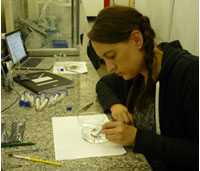 Stephanie Schmidt
Stephanie Schmidt
Is there a relationship between land use change, biodiversity, and disease? In April 2016, I traveled to Sinop in the central-west region of Brazil to participate in a research internship studying that question. Sinop has experienced explosive growth (130,000 people in 45 years) as the agricultural industry, especially soybean farming, has expanded. Much of the dry, temperate forest that used to cover the area has been cleared for development and agriculture. Landowners are required to preserve a portion of forest on their farms. Our research focused on these areas, where cropland transitions to forest.
Our study examined the hypothesis that deforestation decreases biodiversity, causing increases in more resilient small mammal populations. Small mammals, especially rodents, are great hosts for zoonotic disease vectors like mosquitoes and sandflies. If small mammals are acting as a large disease reservoir, this may lead to an increase in human risk for diseases like Chagas disease, leishmania, and a variety of arthropod-transmitted illnesses
My role involved working in the field, setting and checking insect traps in the forest, and in the lab, identifying specimens and preparing them for DNA processing. We used a new technique called DNA metabarcoding, which can be used to assess biodiversity using DNA found in the environment. We worked side-by-side with Brazilian researchers that did an amazing job educating us about the cultural and policy issues that impact land use and environmental issues in Brazil and South America.
Without support from the CAS Global Experience Fund, I would not have had this incredible opportunity to participate in international research. This experience helped to make me a competitive candidate for graduate school, and I will be starting at OSU’s College of Forestry as a graduate research assistant in the fall. I am looking forward to applying the skills I gained during my internship to a project of my own, and continuing towards a career in ecology.
To read more about my research experience, visit http://wildgenetics.wordpress.com
 Meg Marchand
Meg Marchand
The summer of 2016 I had the opportunity to leave the US for my very first time. I was nervous, scared and excited for the adventure that awaited me across the globe. Honselerdijk was a small village that I called home for 90 days in South Holland. I lived in a small olive green-colored house with 10 Polish people on the property of my boss. I worked at MDK Flowers and Greens as an intern in their beautiful glass greenhouses with tropical foliage. I worked with mainly Polish and Dutch people, however I had one coworker who used to be an intern from the same program I was in, but was from Switzerland; her name was Melanie.
I’d never been a farm hand or agricultural worker before so that was an experience in itself, but I know I wouldn’t have learned nearly as much about myself and how to work with others if I were to be back home. The US is a comfort zone and though I love it, I wanted to be challenged and I wanted to push myself to see just how capable I was being on my own in a foreign country. I had to learn how to effectively communicate through language barriers, understand and at times adapt to various cultural norms and professionally handle miscommunications or misunderstandings. No day was the same! Every day presented itself with new challenges and new experiences; for lack of better term it was fun!
The Global Experiences Fund provided me with the opportunity to make connections across the globe. I can now say I have friends in Spain, Poland, France, Belgium, Germany, Austria, Finland, Russia, the Netherlands and even Canada! The experience I got from my international internship was far more than just agricultural, it was personal, professional and spiritual.
Global Experiences Fund
The Global Experience Fund continues to provide support for various international opportunities for our students. Consistent with the College’s goal to provide additional international opportunities. We now have a Global Experience Endowment Fund with a five-year timeline to reach the $50,000 commitment that will then provide expendable funds in perpetuity to support student and faculty engagement in international opportunities. The lead gift for this endowment was Dr. Hiram Larew (MS 1977, PhD 1981) with additional support from E.R. Jackman Friends and Alumni and the Deans’ office.
Are you looking to make an impact in the life experience of a student? We invite you to consider adding your contributions to the Global Experiences Fund. On-line gifts can be made here with a note added to specify the endowment.
Students
 2017 Ag Days
2017 Ag Days
In addition to the traditional Ag Day in the Quad, the Agricultural Executive Council Officer Team and CAS Clubs have put in a lot of work to bring new opportunities to campus.
If you can, please attend, from the Monday workshops through the Keynote Speaker, ODA Director Alexis Taylor on Wednesday.
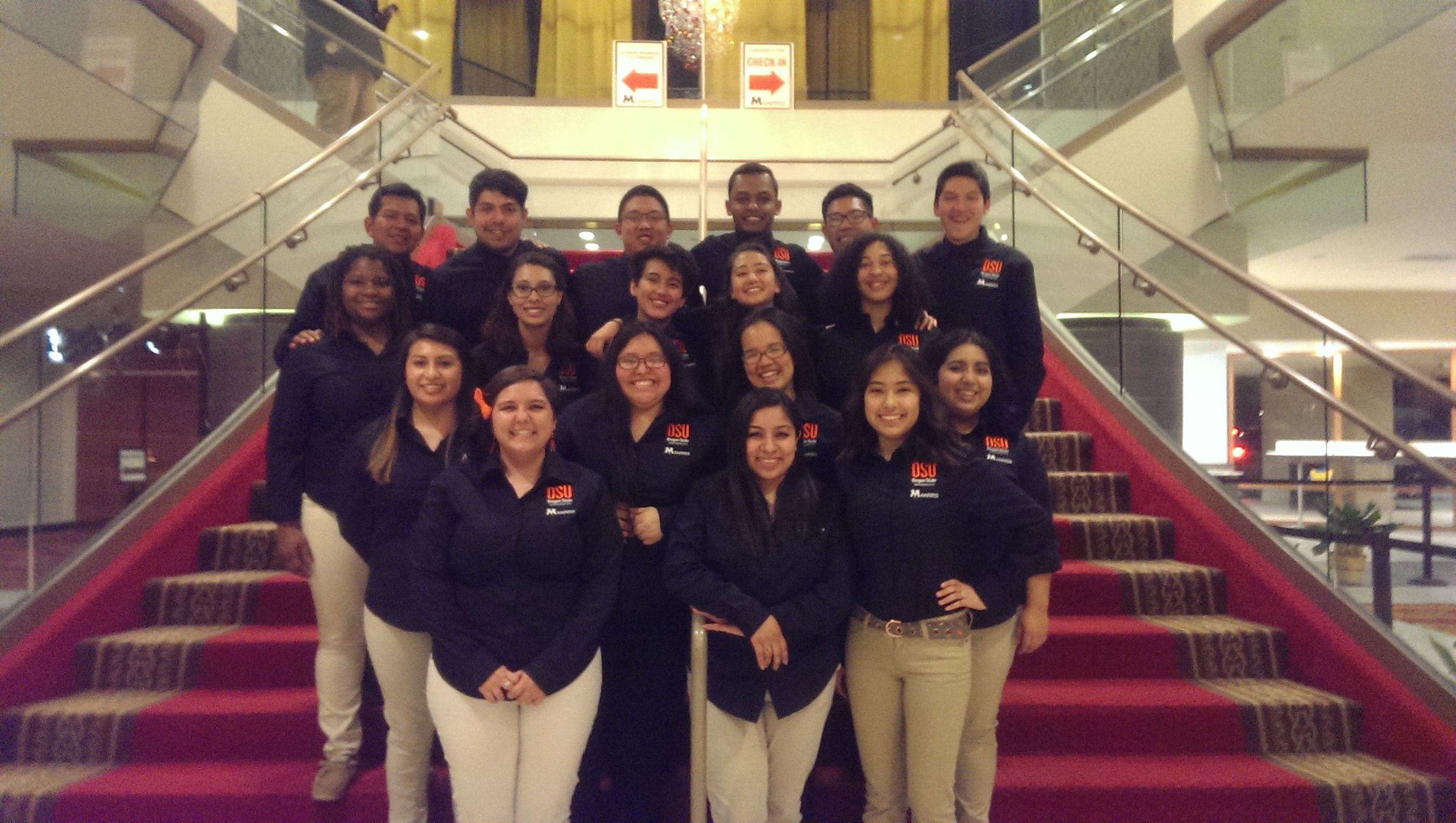 OSU MANRRS Chapter earns awards at national conference
OSU MANRRS Chapter earns awards at national conference
Oregon State University MANRRS Chapter did us proud as they received Region VI Outstanding Chapter Award and 2nd place overall in the Chapter of the Year competition based on community service, professional development and leadership activities. The team was led by Raven Waldron and Khiem Lam. Congratulations to our OSU MANRRS Team!
Smit Vasquez Caballero received a national 2nd place in the Graduate Oral Division II, research competition
Khiem Lam received a national 3rd place in the Undergraduate Oral Research Division I, research competition
Clarisa Caballero Ignacio received national 2nd place in the Undergraduate Oral Research Division I, research competition
Anica Neumann received $1000 John Deere Scholarship recognition
Wanda Crannell was nominated for Chapter Advisor of the Year and was among 3 finalist from 6 nominations, receiving runner-up.
Ag. Business – Bunge 2017 Case Study Final: 1st place Oregon State University - Angel Torres, Justin Tran, Karina Heredia, and Smit Vasquez Caballero as team leader
 2017 CAS Student Awards
2017 CAS Student Awards
The four winners of CAS student awards to be recognized at the May 18th Celebrating Excellence event are:
Madison Esposito – BioResource Research major - Burlingham Undergraduate of Excellence Award
Khiem Lam – BioResource Research major - CAS Outstanding Senior Award
Abby Glauser – Botany and Plant Pathology - Savery Outstanding Master’s Student Award
Javier Tabima – Botany and Plant Pathology - Savery Outstanding Doctoral Student Award
Each award recipient will be presented with a plaque and $1,000.
New Fields
 Leadership Academy: Haley Clement
Leadership Academy: Haley Clement
(By Meg Marchand) Haley Clement, Agricultural Education PhD student, joined Leadership Academy for the sixth year of the program and plans to stick around for year seven. Mrs. Clement comes to us from Paso Roble, California. Though she didn’t live on a farm, she grew up in agriculture and raised sheep and cattle for 4-H and FFA. Upon graduation for high school Mrs. Clement began her pursuit in higher education at Chico State where she earned her Bachelors of Science in Agricultural Sciences in 2010. Immediately after she pursued a credential program to became a certified teacher. Mrs. Clement taught at Liberty Ranch for four years, teaching all the fun ag classes such as agriculture chemistry, agricultural government and agricultural economics...
 It's Finally Spring!
It's Finally Spring!
(By Meg Marchand) It’s finally the BEST term at Oregon State University: Spring Term!
That bright thing in the sky finally peaks through the clouds and students’ attitudes reflect the sunny weather! Though classes may not be any easier and workloads may not be any lighter, spring term is always fun and exciting!
The Agricultural Executive Council has been busy planning the spring industry tour and 2017 Ad Days. The theme for Industry tour is Gorge-ous Oregon. The weekend of April 21st, we will be taking just under 60 students around the Columbia Gorge area to learn about the opportunities in agriculture the area has to offer. The Ag Days theme this year is The Future of Agriculture. Ag Days is the first week of May and we have events scheduled throughout the week!
Aside from these events we have our term meetings, the first being April 12th, then May 3rd and a year wrap-up along with Ag Exec elections on May 24th. All meetings will be at 7pm and held in Weniger 153 (unless otherwise specified). We look forward to enjoying this term with you!
College of Agricultural Sciences Dance
(By Meg Marchand) At the end of winter term the Agricultural Executive Council held the annual College of Agricultural Sciences Dance. More than 60 students and community members came out and kicked the dust up out in Oldfield Animal Teaching Facility with us. The event lasted for three hours on a Friday night in March. Dinner and dessert was included in the cost of entrance to the dance and guests had the opportunity to enter a swing dancing competition at not extra cost as well. Along with this competition there was one offered to clubs that required a bit more preparation prior to the event, a centerpiece contest. Clubs were notified in advance about this competition and opportunity to win Battle of the Aggies points at our earlier meetings and over the listserv.
Research
 Molecule shows ability to thwart pathogens' genetic resistance to antibiotic
Molecule shows ability to thwart pathogens' genetic resistance to antibiotic
Read more at: https://phys.org/news/2017-01-molecule-ability-thwart-pathogens-genetic.html#jCp
(Phys Org) Oregon State University researchers have developed a new weapon in the battle against antibiotic-resistant germs - a molecule that neutralizes the bugs' ability to destroy the antibiotic. "We're targeting a resistance mechanism that's shared by a whole bunch of pathogens," said Bruce Geller, professor of microbiology in OSU's College of Science and College of Agricultural Sciences, who's been researching molecular medicine for more than a decade. "It's the same gene in different types of bacteria, so you only have to have one PPMO that's effective for all of them, which is different than other PPMOs that are genus specific."
Read more at: https://phys.org/news/2017-01-molecule-ability-thwart-pathogens-genetic.html#jCp
Read more at: https://phys.org/news/2017-01-molecule-ability-thwart-pathogens-genetic.html#jCp
 Skin and Bones
Skin and Bones
(By Bennett Hall, Corvallis Gazette-Times) Peter Konstantinidis is the curator of vertebrates for Oregon State University’s Department of Fisheries and Wildlife, and this is his kingdom: a small room in the basement of Nash Hall filled with cabinets packed with about 10,000 stuffed birds and another 10,000 mammal specimens. Next door is the Oregon State Ichthyology Collection, which houses more than 300,000 preserved fish specimens.
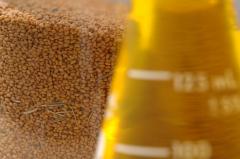 Camelina oil could be economically feasible as source of commercial jet fuel, new OSU analysis shows
Camelina oil could be economically feasible as source of commercial jet fuel, new OSU analysis shows
(By Chris Branam) The camelina plant, which shows promise as a biofuel because of the oil contained in its seeds, could become an economically feasible alternative to conventional jet fuel under certain market conditions, according to a new Oregon State University analysis.
Years of research at OSU and other universities has demonstrated that camelina can be grown on marginal land and has potential as a rotation crop with wheat, thus preserving soil that would otherwise erode from fallow fields and providing a new alternative market for farmers. But the current low price of conventional kerosene-based jet fuel makes it cost-prohibitive for commercial airlines to use camelina-based jet fuel, said Jeff Reimer, an economist in the College of Agricultural Sciences and the study’s lead author.
 Russian thistle found resistant to glyphosate
Russian thistle found resistant to glyphosate
(Western Farmer-Stockman) Oregon researchers say some populations in the northeast part of the state have developed tolerance to the popular herbicide. Their fears came to fruition as they announced recently that resistance to the herbicide has been confirmed in this population. Russian thistle is an invasive species; and while it can be grazed by cattle and its seeds can be popular for birds, it spreads quickly and can cause trouble in fallow wheat land.
In announcing the finding, Judit Barroso, an assistant professor and weed scientist at OSU, said, "This species is a serious threat to the sustainability of the wheat-summer fallow cropping systems of the inland Pacific Northwest. It is very often the predominant broadleaved weed in many of the fields, and farmers rely extensively on glyphosate to control it."
 Benzopyrene exposure linked to learning, memory deficits in zebrafish
Benzopyrene exposure linked to learning, memory deficits in zebrafish
(By Chris Branam) A new study suggests that exposure to benzopyrene impairs adult learning in zebrafish, adding to mounting evidence that the chemical compound and others like it may cause intellectual and memory deficits in humans. “There was no doubt that exposure to even a low-level concentration of benzopyrene affected the learning and memory behaviors in the fish,” said Robyn Tanguay, a molecular toxicologist in Oregon State University’s College of Agricultural Sciences. “We detected neurotoxicity at chemical exposure levels that don’t produce other, more visible signs of toxicity such as body deformities.”
 Here's why cats might make skilled search and rescue animals
Here's why cats might make skilled search and rescue animals
(By Jen Viegas, Seeker) Experts say cats may hold even more potential than dogs when it comes to sniffing out missing persons, bombs drugs and diseases. "Given the importance of olfaction in cat sensory perception, cats could be trained to discriminate between a variety of odors, therefore serving in working roles for detecting specific humans, medical scent detection, bomb sniffing, or drug sniffing," said Kristyn Vitale Shreve, who co-authored the paper with Monique Udell. "Given the popularity of cats, with cats outnumbering dogs by almost 10 million in the U.S. alone, cats may be an untapped resource for this type of work," said Shreve, a researcher in Oregon State University's Department of Animal and Rangeland Sciences.
 OSU prof wows crowd at Georgia Tech new-instrument competition
OSU prof wows crowd at Georgia Tech new-instrument competition
(By Gail Wells) Playing an instrument that looks something like a light saber crossed with a skinny fretless guitar, Oregon State University’s Chet Udell won honors for best performance at a prestigious worldwide competition for inventors of new musical instruments.
Udell, a faculty member in OSU’s College of Agricultural Sciences, was one of 18 semifinalists in the annual Guthman Musical Instrument Competition, held at Georgia Tech in Atlanta in March.
Udell’s Optron is a glass wand that looks a lot like a fluorescent tube. In fact, it started life as a shop light. It’s powered by 144 color LEDs and linked via a cloud of wired and wireless technology to amplifiers and distortion pedals, a videocam, and light- and motion sensors, all of which send digitized signals through an array of sound- and light-producing instrumentation. Udell’s performance for the Guthman competition is expressive by any definition.
Art About Agriculture
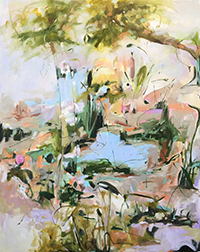 "Works from the Wetlands Series" ~ Renée Zangara
"Works from the Wetlands Series" ~ Renée Zangara
Gallery 440, Strand Agriculture Hall
April 3 through June 2, 2017
Receptions: Thursday April 20 and Thursday May 18; 3:30 to 5 p.m.
Gallery Talk by Renée Zangara: Thursday April 20 at 4 p.m.
Gallery Hours: 3 – 4:30 pm, Thursdays
Portland artist Renée Zangara will be exhibiting her “Wetlands Series” of works on canvas and paper, and mixed media on board in Gallery 440 in Strand Agriculture Hall on the OSU campus April 3 through June 2, 2017.
Multimedia Connections
 Facebook Pages
Facebook Pages
College of Agricultural Sciences
Department and Programs on Facebook
College of Agricultural Sciences
 The Daily Barometer
The Daily Barometer
The Daily Barometer is the student-led newspaper of Oregon State University. Located on the 4th floor of the Student Experience Center, we have been giving students a voice for over 100 years, come join us and let your voice be heard.
 Newsletters
Newsletters
Biological & Ecological Engineering - Annual Newsletter
Microbiology Department - Small Talk
Columbia County Extension - Country Living Newsletter
Coastal Oregon Marine Experiment Station
OSU Extension Small Farms Program - Oregon Small Farm News
North Willamette Research and Extension Center - Down on the Farm
Alumni & Friends
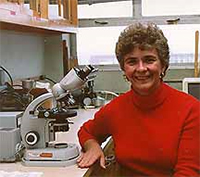
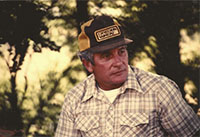
Drs. Mary L. and Robert L. Powelson Endowment (“Fund”)
The Department of Botany and Plant Pathology and the College of Agricultural Sciences is pleased to announce that Dr. Mary L. Powelson, OSU Alumni Association Distinguished Professor Emeritus, has established the Drs. Mary L. and Robert L. Powelson Endowment (“Fund”) to support research, extension and outreach, and/or teaching programs in plant pathology conducted by assistant professors or similar early career state-funded faculty (instructor, professor of practice). Dr. Powelson’s generosity in establishing the endowment within the Oregon State University Foundation will provide support in perpetuity for a wide variety of activities to benefit early career plant pathologists.
Dr. Mary Powelson was named OSU Alumni Association Distinguished Professor of Botany and Plant Pathology in 2000. She received many teaching awards, including the Award of Merit from the National Association of College Teachers of Agriculture. She enriched the lives of scores of students and colleagues through insightful and compassionate mentoring. She gave outstanding professional service to the discipline of plant pathology and to the potato industry and was honored as a Fellow of the American Phytopathological Society in recognition of her many professional accomplishments. She also was awarded an Honorary Life Membership in the Potato Association of America, the predominant professional organization for potato research scientists and extension specialists. During her career, Mary worked closely with growers and agricultural professionals to develop improved strategies for management of potato and vegetable diseases in Oregon and nationally. In 2016, the College of Agricultural Sciences recognized her as a Diamond Pioneer. For additional details on Mary’s career, see http://bpp.oregonstate.edu/mary-powelson .
Dr. Robert L. Powelson (1929-2015) ( http://bpp.oregonstate.edu/robert-powelson ) joined the faculty of the Department of Botany and Plant Pathology in 1959. For many years, he led a research team focused on the epidemiology and management of wheat diseases and taught a graduate level course in plant disease epidemiology. His research and outreach activities were instrumental in improving management of several key diseases of wheat in eastern Oregon. During his career, he advised several MS and PhD students who went on to have distinguished careers on their own as a result of his mentoring. He retired from the department in December 1984, and enjoyed a full retirement of over 30 years pursuing his many recreational interests, and creating a world-class vegetable, fruit, and flower garden.
 OSU Alumni Event held in Washington, DC
OSU Alumni Event held in Washington, DC
The OSU Alumni Association, in partnership with OSU Government Relations and OSU Foundation, hosted a reception for our Washington D.C. Alumni and friends on Tuesday, March 14, 2017 at The Loft at the Hamilton. Despite the blizzard that hit the east coast on Monday, many brave Beavers made it to the event, including a good representation from the College of Agricultural Sciences. Kathy Bickel, Vice President for Alumni Relations provided updates from President Ed Ray; Congresswoman Suzanne Bonamici provided comments, and Jack Barth gave an overview of the Marine Studies Initiative that is an all-OSU effort. Stella Coakley, retired associate dean from the College of Agricultural Sciences, was there to greet old and new friends; any WDC based alumni who would like to be added to her e-mail list for further WDC events and opportunities to interact with OSU students and new alumni can reach her at stella.coakley@oregonstate.edu or by phone at 541-737-5264. It is anticipated that the College will be actively engaged in future alumni events in the Washington DC area.
In Memoriam
 Amy Peters
Amy Peters
Amy Peters was born March 27th 1966 in Visalia California, to Al and Elaine Peters. She went home to be with her Lord March 3rd 2017 at her home in Myrtle Point Oregon. This ended her valiant 9-year battle with breast cancer. She earned her status as professor emeritus in the field of Animal Science, the first with a BS in Animal Science at UC Davis and later with a MS at Oregon State University. Amy Spent several years in Ukiah California, working and living on the University of California Hopland Research station. Amy moved to Myrtle Point in April of 1994 where she worked for Oregon State University, as an Ag Extension Agent.
Amy had an extreme love for animals. She was also very active and enjoyed time spent with friends while water skiing, snow skiing, hiking, and bicycling. Those who knew her came to love her compassion, hardworking nature, and independence. She was always eager to help others however she could. With her analytic mindset, science and research were two of her greatest passions.
Amy is survived by her boyfriend of 15 years, Joe Ficher; Her father, Al Peters; mother, Elaine Wright; Her sisters, Leslie Darner and Meredith McDowell; and her Brother, Brian Peters. Amy didn’t have any children, but she loved her cats as if they were.
Her service will be held at the Pavilion located at the Myrtle Point Fair grounds on March 25th 2017, at 2pm. Pastor Lloyd Pounds of the First Christian Church, where she regularly attended, will be officiating.


